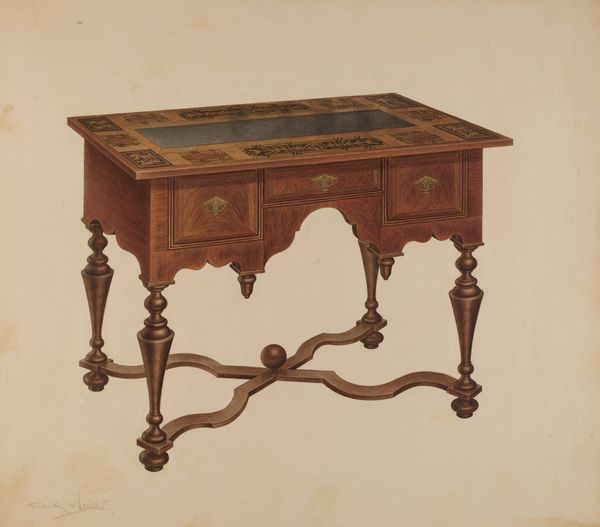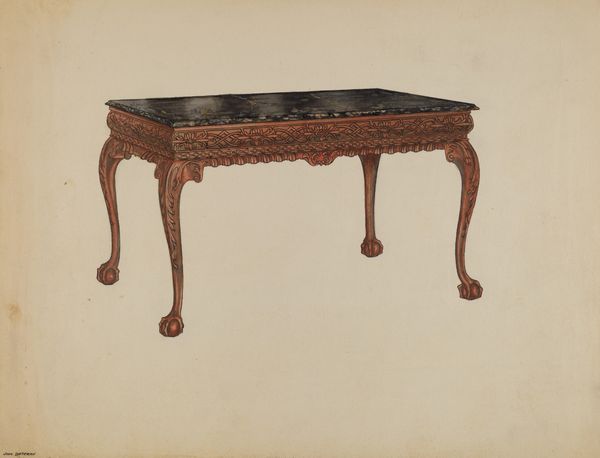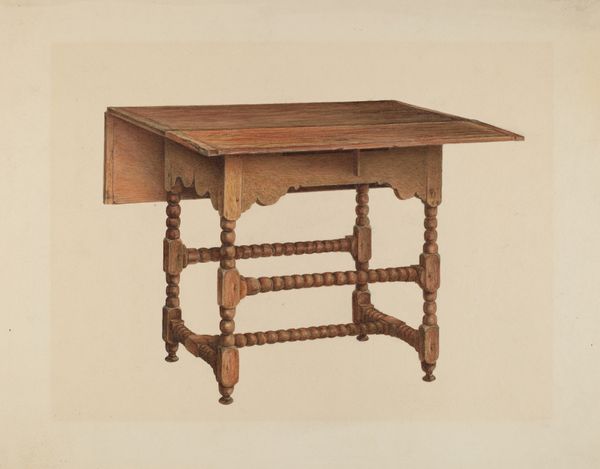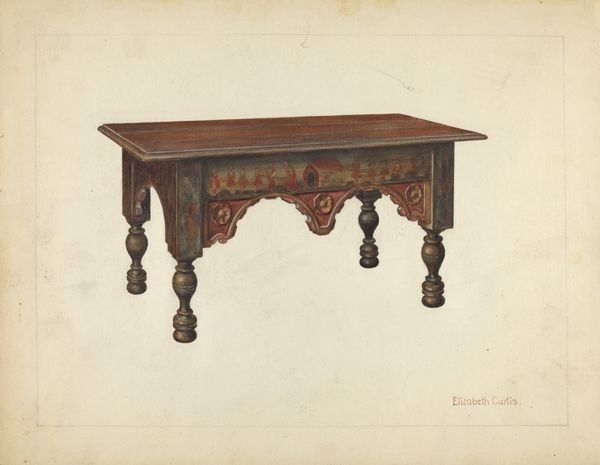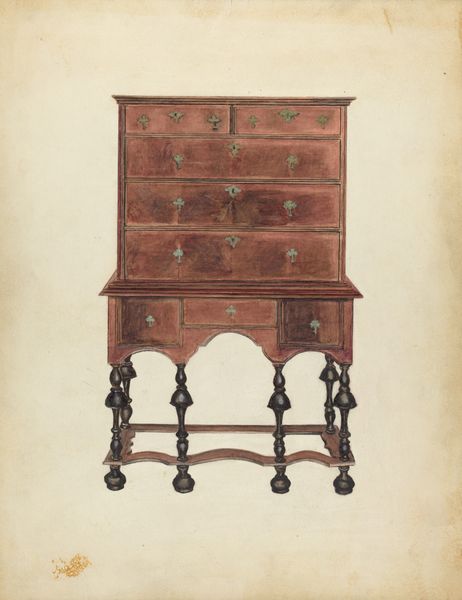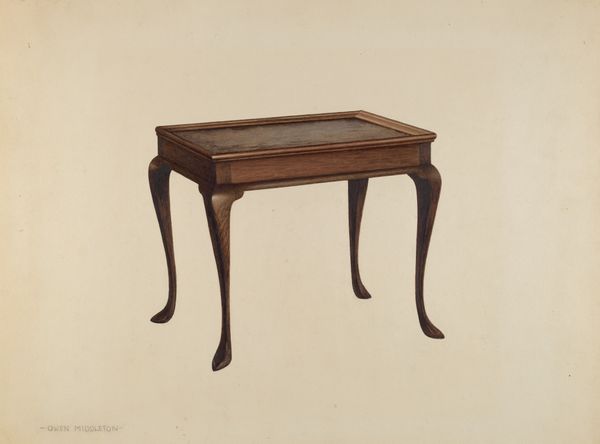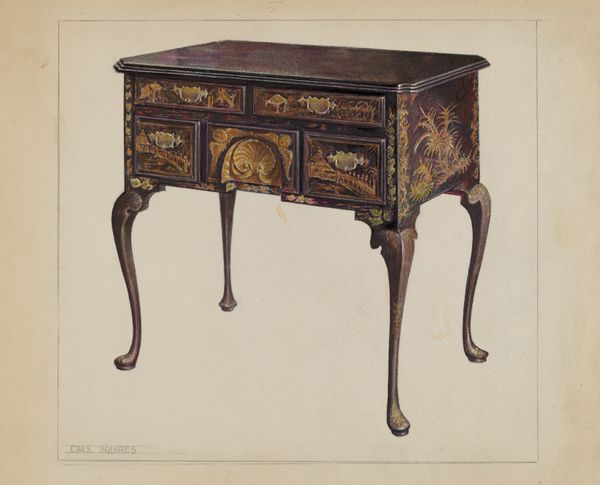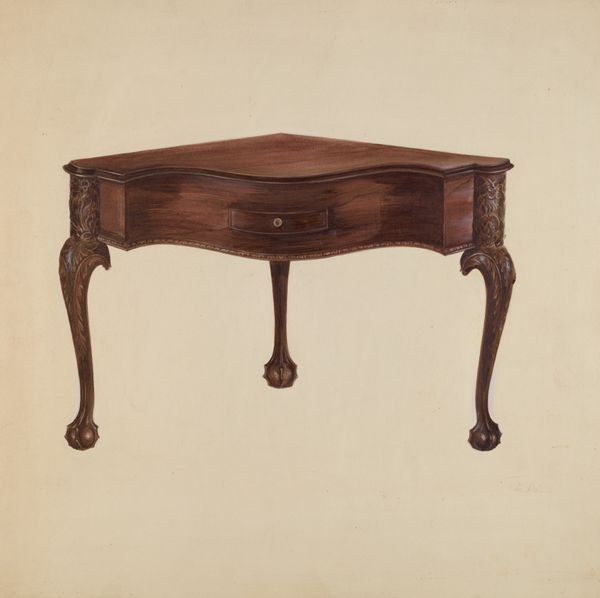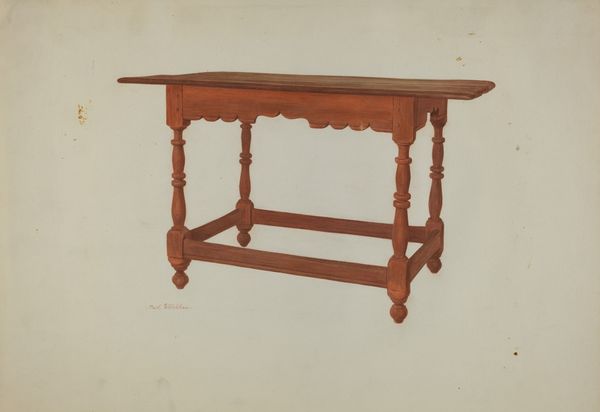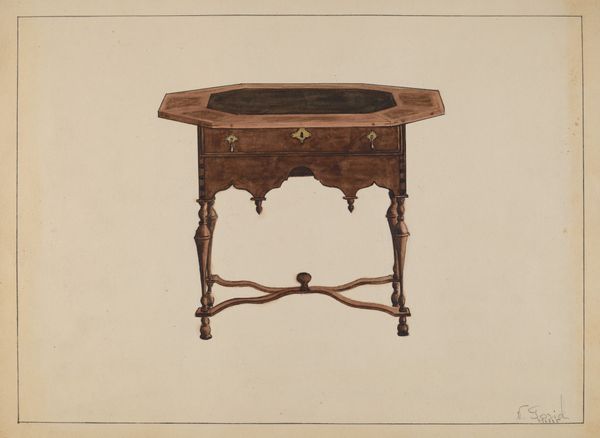
drawing, pencil
#
drawing
#
charcoal drawing
#
pencil
#
modernism
#
realism
Dimensions: overall: 35.2 x 45.5 cm (13 7/8 x 17 15/16 in.) Original IAD Object: 27"high; 28"long; 23"deep
Copyright: National Gallery of Art: CC0 1.0
Curator: Welcome. We are looking at "Tea Table," a work rendered around 1940 by Charles Henning using pencil and charcoal. What’s your initial response? Editor: There's a quiet formality to it, almost like a portrait of an object. The stark contrast gives it a strangely melancholic aura, doesn't it? Curator: Indeed. Henning's rendering favors a meticulous representation. Consider the geometric exactness of the tabletop versus the curvaceous support structure below; it’s a study in contrasts—form versus function. It echoes Modernist precision within a Realist style. Editor: True, that base *is* fascinating. It reminds me a little of gothic architecture, those pointed arches inverted to hold up this domestic object. Are those brass drawer pulls the only accent color? Curator: Precisely. They serve as focal points, disrupting the monochromatic field, which also draws the eye to the horizontal plane. Editor: I keep thinking about its scale; it feels diminutive, like it belongs in a dollhouse. Almost a symbol, divorced from actual use... more about the *idea* of domesticity. Curator: It functions more as a symbolic still-life. Notice the expert handling of shadow, reinforcing the form's dimensional presence on a two-dimensional plane. Editor: Yes! And maybe that explains the feeling... It is about form—an exercise, a visual analysis of angles, volumes, and shapes... but with, I confess, a tinge of sadness still clinging to the subject! Curator: It certainly complicates interpretations. It exists somewhere between document and artwork. It invites one to consider our interaction with everyday life. Editor: It's those undercurrents I love, challenging something that at first seems mundane to offer richer ideas. It haunts me a bit, in a good way. Curator: A testament to the enduring power found even within the humble study. It stays with us, prompting thoughtful re-evaluation of commonplace aesthetics.
Comments
No comments
Be the first to comment and join the conversation on the ultimate creative platform.
